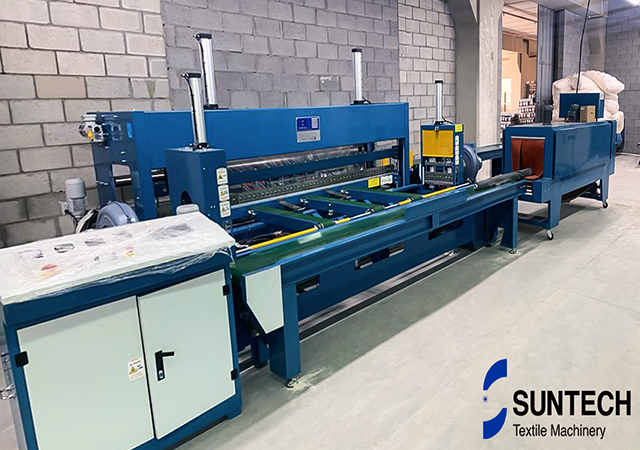As we bid adieu to another transformative year in the textile world, reflecting on the blend of tradition and technology, sustainability and style, becomes inevitable. The industry has been a dynamic canvas, portraying societal shifts, technological advancements, and environmental consciousness. In this retrospective journey, let's unravel the fabric of time and predict the top trends shaping the textile industry in the upcoming year.
1. Innovation to Tackle Labor Challenges
As the world grapples with the looming risk of labor shortages, the textile industry, known for its high labor dependence, is embracing technology to mitigate challenges. Predictably, an array of new technologies will permeate textile production, reducing manual dependence. According to Gartner, by 2024, robot workers are projected to outnumber human counterparts.
Introducing SUNTECH automatic packaging machine
SUNTECH's automatic packaging machine is a marvel of automation, streamlining labor-intensive tasks. With a capacity of 3360 rolls per shift, it employs smart sorting, vacuum packing, labeling, and ERP connectivity. This technology reduces reliance on manual labor, ensuring heightened productivity and efficiency. The AI-powered inspection system identifies defects, sampling and taping functions ensure quality control, and a sorting feature organizes rolls according to various criteria. SUNTECH's solution maximizes productivity, accuracy, and quality control in fabric roll packing.
2. Embracing Organization Automation and Digitization
Smart machinery and robotics are revolutionizing textile manufacturing, enhancing speed, accuracy, and sustainability. Automated looms, robotic material handling, and intelligent quality control systems are integral to modern production floors. The Internet of Things (IoT) is weaving into the textile supply chain, providing real-time visibility and control. IoT integration enhances transparency from tracking raw materials to monitoring environmental conditions during transportation, minimizing resource wastage.
3. Strengthening Information Security
With the implementation of ERP or SCM systems, information security becomes paramount. Industrial Control Systems may prioritize safety lower than business objectives, necessitating a re-communication of priorities. Balancing commercial profits and organizational cultural change is crucial for textile manufacturers to keep pace with Industry 4.0.
4. Investments for Economic Benefits
In a global economy fraught with uncertainties, the focus on cost reduction and efficiency improvement continues. Investments in 2024 will be directly measured for economic benefits and potential profit performance.

5. On-time Delivery for Stable Supply Chain Performance
The textile industry, still feeling the aftershocks of past supply chain disruptions, emphasizes on-time delivery as a crucial factor in supplier quality. Timely delivery enables textile companies to respond promptly to market demands, staying ahead in the competitive landscape.
6. Demand for AI Technology Talents
AI-powered automation is transforming textile production landscapes. Smart factories leverage AI algorithms for predictive maintenance, real-time quality control, and optimized manufacturing processes. The collaboration between AI and skilled technicians ensures efficiency and craftsmanship.
7. Quality Reigns Supreme for Vendors and End Customers
In today's market, consumers prioritize quality over price. For apparel production, quality spans both process and product, including durability, aesthetics, functionality, and adherence to standards. Manufacturers play a critical role in meeting these consumer requirements, making quality paramount in apparel manufacturing.
8. Embracing Sustainability and ESG
Global environmental changes drive attention to environmental, social, and governance issues. Startups focus on alternative textiles that are recyclable, regenerative, reusable, and responsibly sourced. Examples include recycled fibers from agricultural waste and biodegradable plant-based materials. These sustainable practices move the industry towards a circular economy, conserving resources, improving brand reputation, and providing cost savings for manufacturers and apparel stores.
As the textile industry readies itself for 2024, the tapestry of transformation unfolds. Innovation, automation, sustainability, and quality are the threads weaving the fabric of the future. Embracing these trends will not only propel the industry forward but also redefine its role in an ever-evolving global landscape. The loom is set, the shuttle is ready, and the canvas awaits the strokes of innovation in the coming year.




